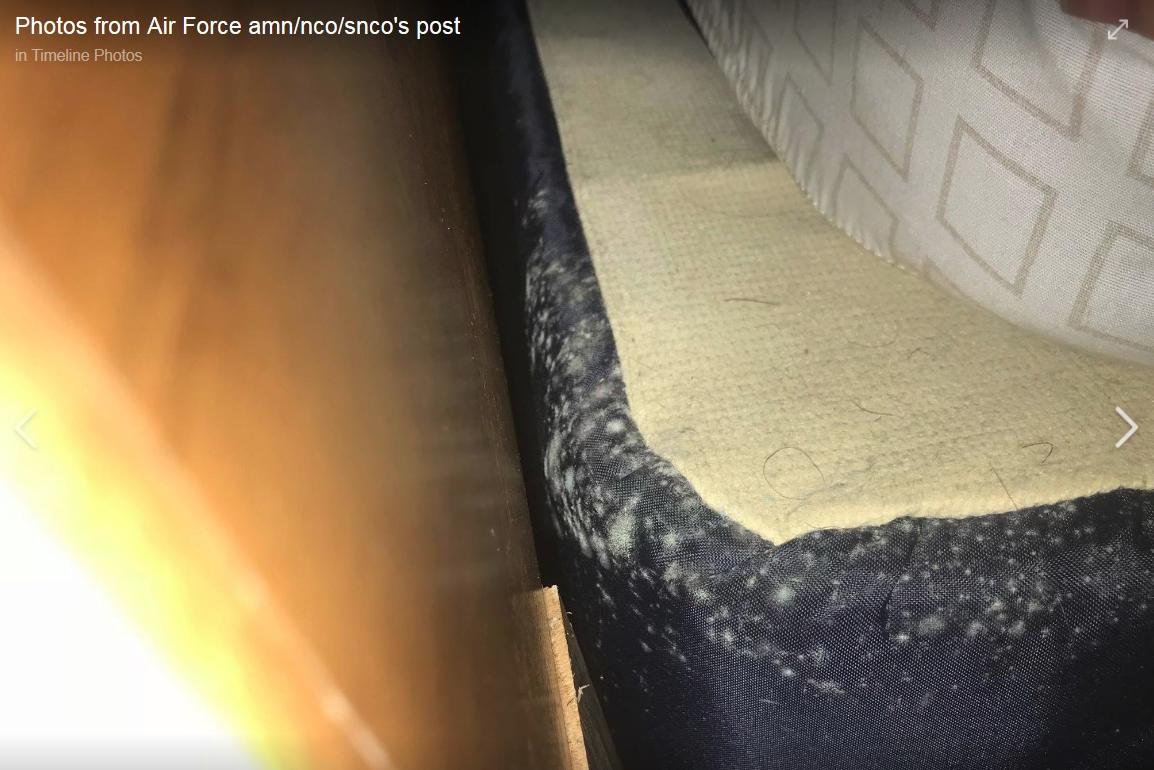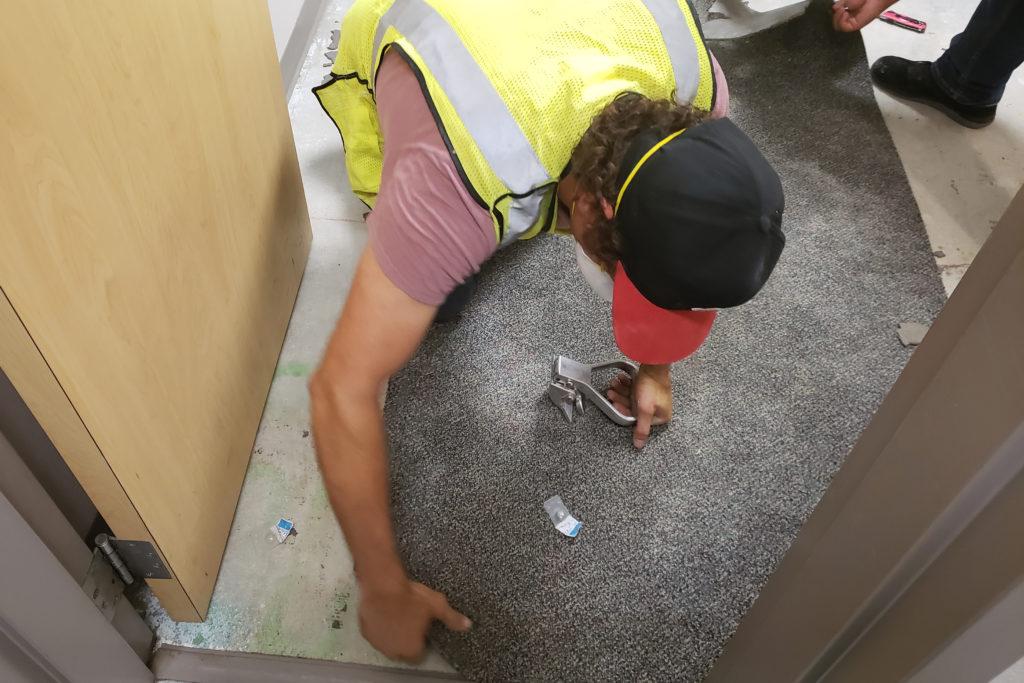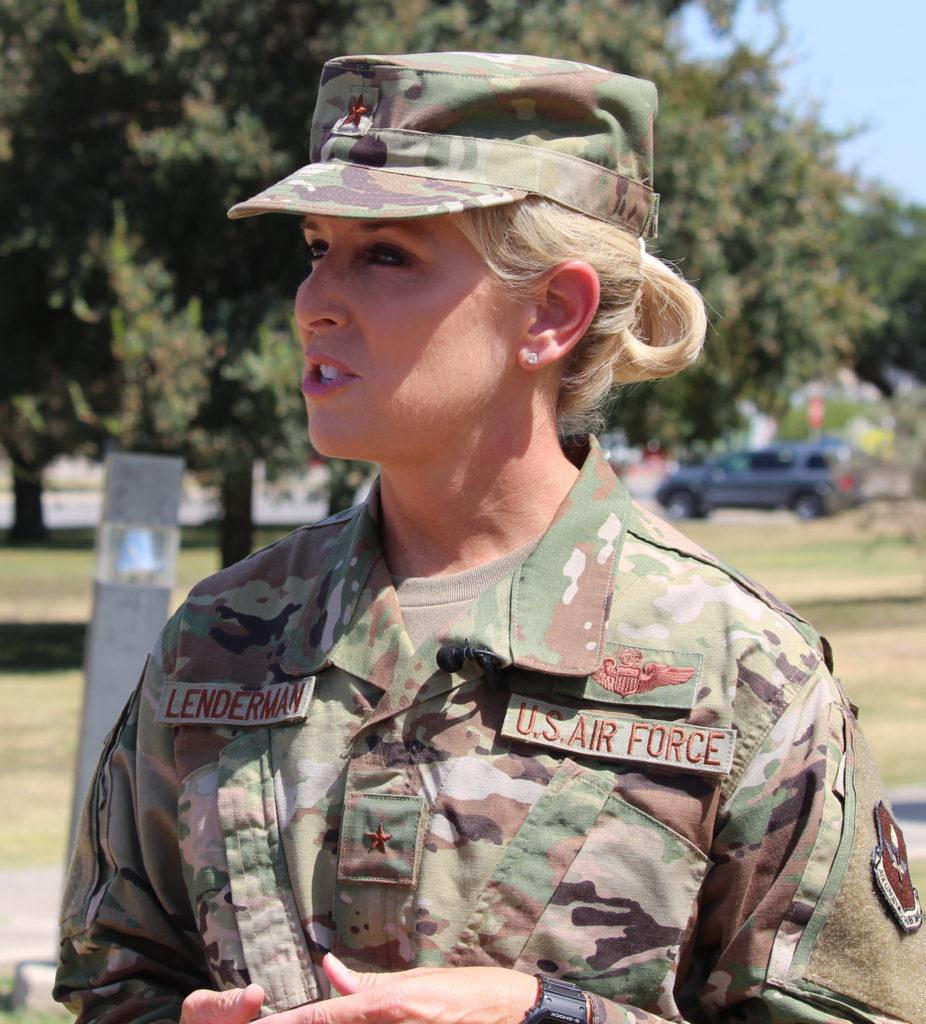
Photos of mold on bedding, shoes, walls, and uniforms at a Texas military base went viral on social media in July, leading to an unusually massive response from the Air Force that continued into August.
The pictures from Joint Base San Antonio-Lackland were taken by airmen and posted to a Facebook page popular among members of the Air Force. The photos showed rampant mold growth in the base's technical training dormitories.
The resulting criticism prompted the 502nd Air Base Wing, which is responsible for logistics at the three bases that make up Joint Base San Antonio, to launch an inspection of all dormitory buildings. The Air Force said about 2500 rooms had some mold, and more than 500 people were temporarily relocated.

In response, workers from the 502d Civil Engineering Group tried to remediate the mold by putting up ceiling fans, and replacing carpets with vinyl flooring. They also used bleach and bio-agents to try to inhibit further growth.
Ten people reported minor medical symptoms in connection with the mold, according to Maj. Gen. John DeGoes of Lackland's 59th Medical Wing.
"The primary health concern with exposure to mold are allergy-like symptoms," he said. "Itchy, watery eyes, runny nose, sore throat. Those who have asthma could have an asthma flare."
Brig. Gen. Laura Lenderman, commander of the 502d Air Base Wing, said mold has long been a problem in the dorms due to factors like heat, humidity and aging infrastructure.
"What we didn't know was the extent of the problem," she said. "It's that social media blast that allowed us to understand the extent."
She pointed out that a dorm and campus improvement plan was in the works before photos of the mold were posted online. But she admits that social media helped speed up the process.
"We were able to implement pieces and parts of that plan as well as some other new ideas, based on the situation we're currently facing, "Lenderman said, "to provide momentum and a catalyst to the solutions."

The military has long struggled to manage complaints about mold. In February, the Senate Armed Services Committee held a series of hearings that exposed problems that families were facing with mold in private housing on bases across the country. Lawmakers took military leadership to task over their lack of responsiveness and passed a defense budget which includes housing protections.
Kelly Hruska of National Military Family Association said that while most of the hearings focused on private housing, a bigger picture emerged.
"In bits and pieces, you would hear that privatized housing was just the tip of the iceberg," Hruska said, "and when you looked at some of the barracks, and you looked at some of the older work buildings, that they were facing similar problems with mold."
She said the photos of widespread mold at Lackland have helped spotlight the problem, and the use of social media is telling.
"The fact that they were posting the pictures on Facebook tells me that there may have been a breakdown in the reporting," Hruska said. "A lot of the focus has been on the housing. So this tells us that we need to expand some of these protections, and to make sure that it includes all installation facilities."
In the weeks since Lackland's mold problem exploded on social media, base leaders have used some of the same tools to respond. They've documented their cleanup efforts across Twitter and Facebook and created a mold remediation website to keep service members and the public updated.
"I think leadership wanted to signal, 'We take this seriously,'" Hruska said. "But I also think they wanted to signal that not reporting this or taking appropriate action is a problem also."
Brig. Gen. Lenderman said she's committed to transparency and is determined to rebuild faith in her wing.
"If we've lost any amount of trust with our airmen because of this situation with the dorms, that's my job to rebuild that trust," Lenderman said.
This story was produced by the American Homefront Project, a public media collaboration that reports on American military life and veterans. Funding comes from the Corporation for Public Broadcasting.
Copyright 2019 North Carolina Public Radio – WUNC. To see more, visit North Carolina Public Radio – WUNC.9(MDEyMDcxNjYwMDEzNzc2MTQzNDNiY2I3ZA004))









